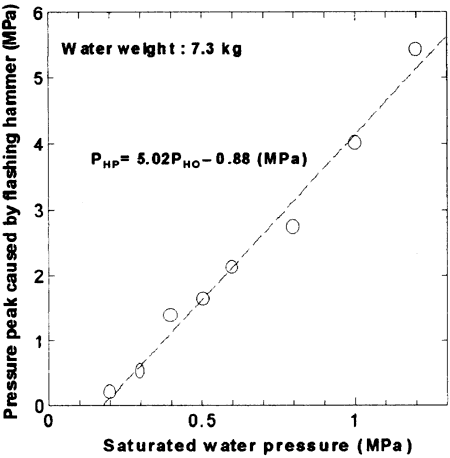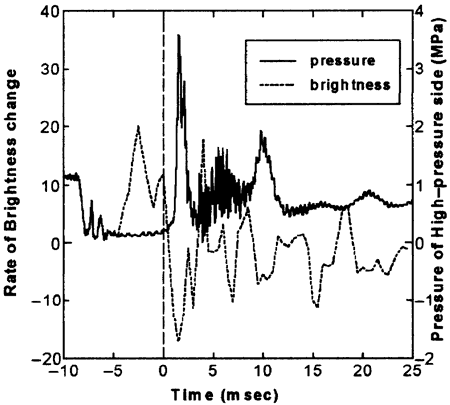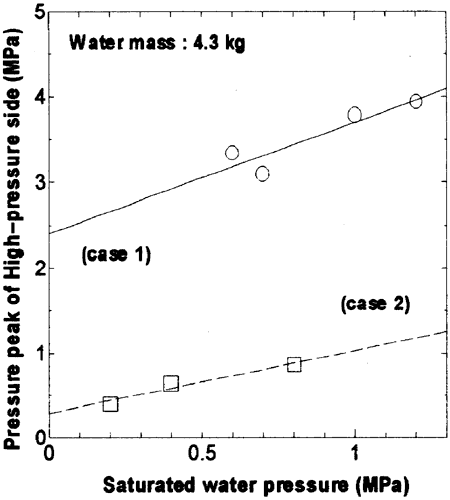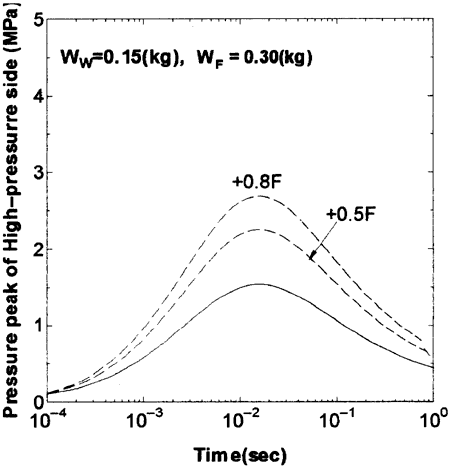
Fig. 5 Relation between initial pressure pressure PHO and pressure peak PHP
This result can prove the following facts; first, high-pressure peak is caused by thermal interactions, and not by mechanical or diabetic hydrodynamic impacts when the sluice valve opens. Secondly, generation of high-pressure peak with the rapid bubble growth requires sufficient heat supply from the heated tube wall. The result of the experiment revealed that the rapid bubble growth produced high pressure when high-pressure saturated water rapid contacted cold water. As for the high pressure peak generation, a preliminary numerical simulation was performed using a simple one-dimensional model as shown in Fig. A-1. In this model, we supposed that pressure peak can be generated by the growth of the flashing vapor bubble due to rapid depressurization in high pressure saturated water, where namely expanding-layer, and by the restriction of the bubble growth due to mass of cold water, where namely inertial-layer.
The model is described in Appendix A in detail. A typical simulated results is shown in Fig. 8. In the figure, solid line represents case 2 when with no heat supply from the tube wall, and dotted line case 1 when with some heat supply from the tube wall (corrector; Δ F = +0.5F, +0.8F in Eq. (A-6)), respectively.

Fig. 6 Comparison between differential brightness and pressure trace saturated-water side

Fig. 7 Effect of heat supply from tube wall on generated pressure peak
The simulation reveals that a high-pressure peak is generated at around 10 ms after when high pressure saturated water contacts cold water, and magnitude of the pressure peak was in proportion to the amount of heat supply from the tube wall. Although the simulated high-pressure peaks differ slightly from with the experimental ones, this simple model can estimate the phenomena sufficiently.
4. CONCLUSIONS
This paper describes a preliminary study of the phenomena that the high-pressure saturated water contacts rapidly low-pressure, low-temperature water. The purpose of the study was to clarify the transient phenomena that occur when high-pressure saturated water blows down from a pressure vessel into a water-filled containment during a wall-crack accident or a LOCA in an advanced reactor.

Fig. 8 Pressure trace simulation with and without additional heat supply from tube wall
BACK CONTENTS NEXT